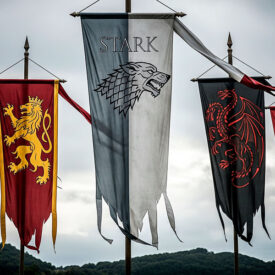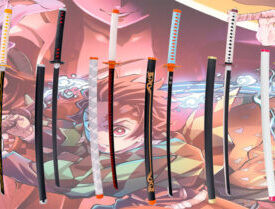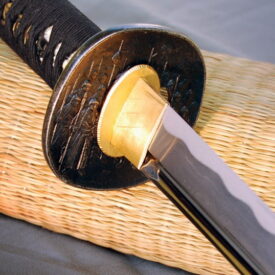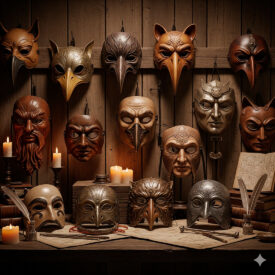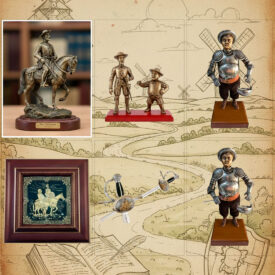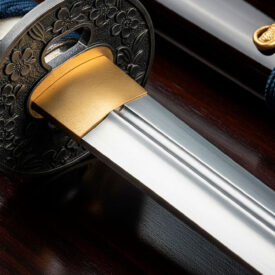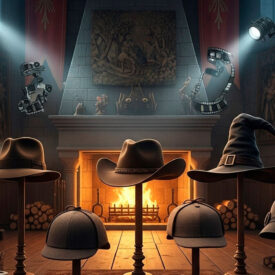Which was worth more: life or honor? Imagine the dawn mist in an isolated field, two figures wrapped in frock coats, breathing calmly as the ritual of the duel unfolds. That scene, so many times recreated in literature and cinema, summarizes the symbolic force of duel pistols and the culture that surrounded them. In this article, you will explore the history, protocol, technical design, and material memory of these weapons, and understand why today they are collector’s items and objects of study in museums.
Duels through time: origin, practice, and museum memory
| Date / Era | Event |
|---|---|
| Middle Ages | |
| Middle Ages | Origin of the custom of dueling as a way to repair or avenge offenses against honor. |
| Middle Ages | Alfonso X codifies rules related to dueling in Las Siete Partidas. |
| 15th–17th Centuries | |
| 15th–16th Centuries | Duels are mainly fought with swords, favoring expert fencers. |
| 17th Century | Popularization of pistol duels, balancing the possibilities between contenders. |
| 1626 | Cardinal Richelieu publishes an edict in France punishing duelists with decapitation. |
| Late 18th Century – 19th Century | |
| 1770 | Specialized duel pistols begin to appear on the market. |
| 1805 | Dueling is included as a crime in the Spanish Penal Code. |
| 1820s (third decade of the 19th century) | Considered the “golden age” of dueling, influenced by Romanticism. |
| 1835 (April) | Mariano José de Larra publishes the article “El Duelo” criticizing the practice. |
| 1835 | Don Álvaro o la fuerza del sino (Duke of Rivas) premieres, a work that exemplifies the romantic fatality linked to death and dueling. |
| 1836 | Essai sur le duel by the Count of Chateauvillard is published, an influential code of honor in Europe. |
| c.1840 | Approximate dating of a duel pistol case (Gastinne Renette) acquired by the National Museum of Romanticism in 2021. |
| 1844 | Eusebio Zuloaga González obtains the title of honorary arquebusier granted by Isabel II. |
| 1845 | Eusebio Zuloaga receives national awards at the National Exhibition of 1845. |
| 1851 | Eusebio Zuloaga presents two duel pistol cases and obtains two medals at the Great Exhibition of London. |
| 1856 | Duel between Pedro Antonio de Alarcón and Heriberto García de Quevedo. |
| c.1856–1860 | Approximate creation of the duel pistol case by Eusebio Zuloaga in Eibar. |
| Late 19th Century | |
| 1870 (March 10) | Enrique de Borbón writes a declaration of enmity towards the Duke of Montpensier. |
| 1870 (March 11) | Pistols for the duel between Montpensier and Borbón are purchased at Ormaechea’s house. |
| 1870 (March 12) | Duel of Carabanchel between Antonio de Orleans, Duke of Montpensier, and Infante Enrique de Borbón, resulting in the latter’s death. |
| 1877 | Madrid has 41 daily newspapers and 135 weekly newspapers; Barcelona has 22 daily newspapers and 65 weekly newspapers, a situation that encouraged challenges linked to journalism. |
| 1890 | Publication of Ofensas y Desafíos by Eusebio Yñiguez, a Spanish code of honor. |
| 1892 | Ramón del Valle-Inclán, in Mexico, almost engaged in a duel with Vicente Agüeros, director of El Tiempo. |
| 1896 | Valle-Inclán duels with Julio López Castillo; both are wounded. Subsequently, Valle-Inclán suffers an assault at a social gathering that leads to the amputation of an arm. |
| Late 19th Century – Early 20th Century | |
| 1900 | Publication of Lances entre caballeros by Julio Urbina y Ceballos-Escalera, a key work for codes of honor in Spain. |
| Early 20th century | The practice of dueling begins to fall out of use and becomes obsolete. |
| 1912 | Publication of El Honor y el Duelo by José María Laguna Azorín, subtitled “anti-dueling propaganda,” as part of anti-dueling leagues. |
| 1918 | Indalecio Prieto enters the Congress of Deputies. |
| Museum memory and exhibitions (20th–21st centuries) | |
| 1924 | The National Museum of Romanticism opens its doors with just over a hundred pieces in its collection. |
| 2004 (December) | The National Archaeological Museum presents “The Duel Pistol” as the “Piece of the Month.” |
| 2019 | The National Museum of Romanticism launches its “The Museum Presents” program with the purchase and restoration of the portrait of Francisco Aranda y Delgado by Federico de Madrazo. |
| 2019 (Oct 1) – 2020 (Feb 23) | Temporary exhibition at the National Museum of Romanticism of a French duel pistol case (Vidal, from Tarbes) loaned by the National Museum of Sculpture of Valladolid. |
| 2019 | The manuscript of the article “El duelo” by Mariano José de Larra is one of the “quarterly pieces” of the National Museum of Romanticism. |
| 2020 | The National Museum of Romanticism acquires the drawing of Ramón Mesonero Romanos by Rosario Weiss. |
| 2021 | The National Museum of Romanticism acquires and restores the portrait of Alejandro Ferrant y Fischermans by Luis Ferrant. |
| 2021 | The Museum purchases a duel pistol case from the French house Gastinne Renette at auction. |
| Late 2022 | The National Museum of Romanticism acquires Eusebio Zuloaga’s duel pistol case through an irrevocable offer to sell. |
| 2023 (July 19 – Oct 8) | Exhibition of Eusebio Zuloaga’s duel pistol case in the Meeting Room (room XXV) within the exhibition “The Luxury of Honor.” |
From ritual to object: the social function of duel pistols
The duel was, above all, a ceremony for the restoration of reputation. It did not always seek death; often the objective was to sacrifice personal tranquility and demonstrate that the aggrieved person was willing to stake everything for their name. Duel pistols embodied this idea: instruments that could kill, but primarily served as a symbolic test of commitment. Understanding this paradox is key to placing the weapon in its social context.
Why the pistol and not the sword?
The pistol democratized the duel: unlike the sword, which favored skill and training, the pistol offered a more accessible technique. The act of aiming was less dependent on practice and, nevertheless, solemn enough to maintain the ritual dimension of the duel. In addition, the aesthetics and luxury associated with pistols — identical pairs, velvet-lined cases, damascened finishes — turned these sets into status symbols.
Technical characteristics and variants of duel pistols
Technically, duel pistols were developed to provide the most even shots possible between contestants. This involved specific decisions in design and manufacturing: barrels calculated for stability, reliable mechanisms, and accessories that ensured uniformity in loading and projectile.
| Characteristic | Description |
|---|---|
| Barrel length | 25–30 cm usually; octagonal for greater rigidity. |
| Bore | Smooth or rifled depending on origin; smooth was common to avoid disputes about “excessive precision.” |
| Mechanism | Percussion in the 18th–19th centuries; prior to that, matchlocks and flintlocks. |
| Identical pair | Gunsmiths delivered sets with equivalent calibration and cases with reloading tools. |
| Decoration | Damascening, engravings, exotic wood, and brass or gold applications. |
Types of duels and their technical implications
- First shot: the most common; allowed both to save honor without harming the adversary.
- First blood: required controlled precision and, therefore, better weapon and ammunition conditions.
- To the death: involved reloads and complete cases with tools for a prolonged confrontation.
Cases, accessories, and manufacturing: the art behind the pistol
The case was not merely a container: it was part of the language of honor. A duel pistol case attested to its owner’s status and the weapon’s quality. Inside were essential tools to equalize conditions: primers, bullet molds, ramrods, and disassembly keys.
Prestigious gunsmiths took care of every last piece: the barrel rifling, bluing, springs, and engravings. Some details, such as micro-casting or the adjustment of the tang, made the difference between a practical object and a work of art. Eusebio Zuloaga or the Gastinne Renette house are examples of artisans whose pieces are studied in museums today.
Replicas and duel pistol cases
Today there is a wide range of replicas that faithfully reproduce both the form and finishes of the original cases. These replicas allow the study of the weapon’s ergonomics and an appreciation of the artisans’ work without interfering with historical pieces. Modern production combines artisanal techniques with industrial quality control to ensure finishes and safety in decorative pieces.
What to look for in a replica
- Fit: that the pieces fit without obvious play.
- Materials: stabilized woods, metals with appropriate patina, and quality finishes.
- Included tools: ramrod, bullet mold, and well-lined compartments.
Famous duels and characters who defined an era
The 19th century offers stories that mix politics, press, and honor. Writers, military figures, and politicians frequently engaged in duels: Mariano José de Larra wrote against the practice, while figures like Ramón del Valle-Inclán lived their own stories with serious consequences. The Carabanchel Duel (1870) between Montpensier and Enrique de Borbón is an example that illustrates the clash between politics and honor.
Protocol, seconds, and unwritten rules
Behind every confrontation there was a team: the seconds. Their responsibility went beyond that of mere witnesses: they verified weapons, selected the terrain, set distances, and, in some cases, loaded the pistols. The presence of doctors was common; that of priests, in general, was not. The protocol sought to create symmetrical conditions and an appearance of justice amidst the risk.
Common elements of the protocol
- Time and place: at dawn, in isolated locales.
- Equality: calibrated pistols and cases verified by seconds.
- Prior mediation: attempt to resolve the conflict before the duel.
- Witnesses and record: the second was responsible for informing the authorities if there were fatal consequences.
What the pistols were like: technical examples and their meaning
Duel pistols tell stories not only through their decorations; they do so through their technical solutions. A heavy barrel stabilizes the trajectory, a disassembly key allows for quick maintenance, and a bullet mold ensures that the bullets have the precise diameter. These elements seek two objectives: equality and ritual dignity.
| Parameter | Implication for the duel |
|---|---|
| Bullet calibration | Ensures that the power and trajectory are comparable between both contestants. |
| Finishes and shine | Reducing reflections (bluing) avoided distractions and increased the sobriety of the duel. |
| Firing mechanism | A smooth trigger prevents misfires and ensures that the confrontation depends more on the decision than on technical defects. |
Conservation and study: how to interpret a pistol in a museum
When you visit an exhibition and gaze at a case, you don’t just see metal and wood: you perceive a social biography. Look at the signs of use, repairs, and decorative additions: they tell you if the piece was actually used or if it was created for ostentation. Many pieces preserved in museums show the balance between artistic finish and functionality.
The decline of the duel and the transformation of the weapon into an object of memory
The progressive legal and moral condemnation of dueling, along with changes in political and social culture, transformed the duel pistol into an object of remembrance. From the late 19th century and throughout the 20th century, cases moved into private collections and museums. Today, their presence in rooms dedicated to Romanticism or social history allows us to rethink the relationship between ritualized violence and honor.
Legislation and public opinion
- Laws penalized dueling from different periods, but their application depended on social pressure.
- Journalists and writers played a decisive role in public criticism, eroding the social acceptance of dueling.
Comparison: duel pistols vs. bladed weapons in duels
| Aspect | Duel pistols | Bladed weapons |
|---|---|---|
| Dependence on skill | Less: the pistol equalizes contestants more. | More: favors trained fencers. |
| Ritual | More formal, incorporates cases and seconds. | Focuses on personal skill and chivalric tradition. |
| Social perception | Symbol of status and modernity in the 19th century. | Associated with tradition and nobility. |
How to read the stories these pieces tell
It’s not uncommon for a duel pistol to inspire questions: was it used? Did it come from a prestigious house? Was it a witness to a famous duel? The answer comes by combining technical data (gunsmith’s marks, serial number), historical context (date and character), and conservative traces. This methodology transforms passive observation into a critical and fascinating reading.
The final essence: duel pistols are much more than metallic objects; they are material witnesses to a culture that knew how to turn honor into ceremony and violence into protocol. Today, when contemplating a replica or a case in a museum, we can better understand how societies construct and deconstruct symbols of dignity. I invite you to look at every detail with historical curiosity and to consider how the past shapes our ideas about bravery, reputation, and the law.
VIEW MORE ANCIENT DUEL PISTOL REPLICAS | VIEW OTHER ANCIENT PISTOL REPLICAS | VIEW MORE ANCIENT FIREARM REPLICAS


